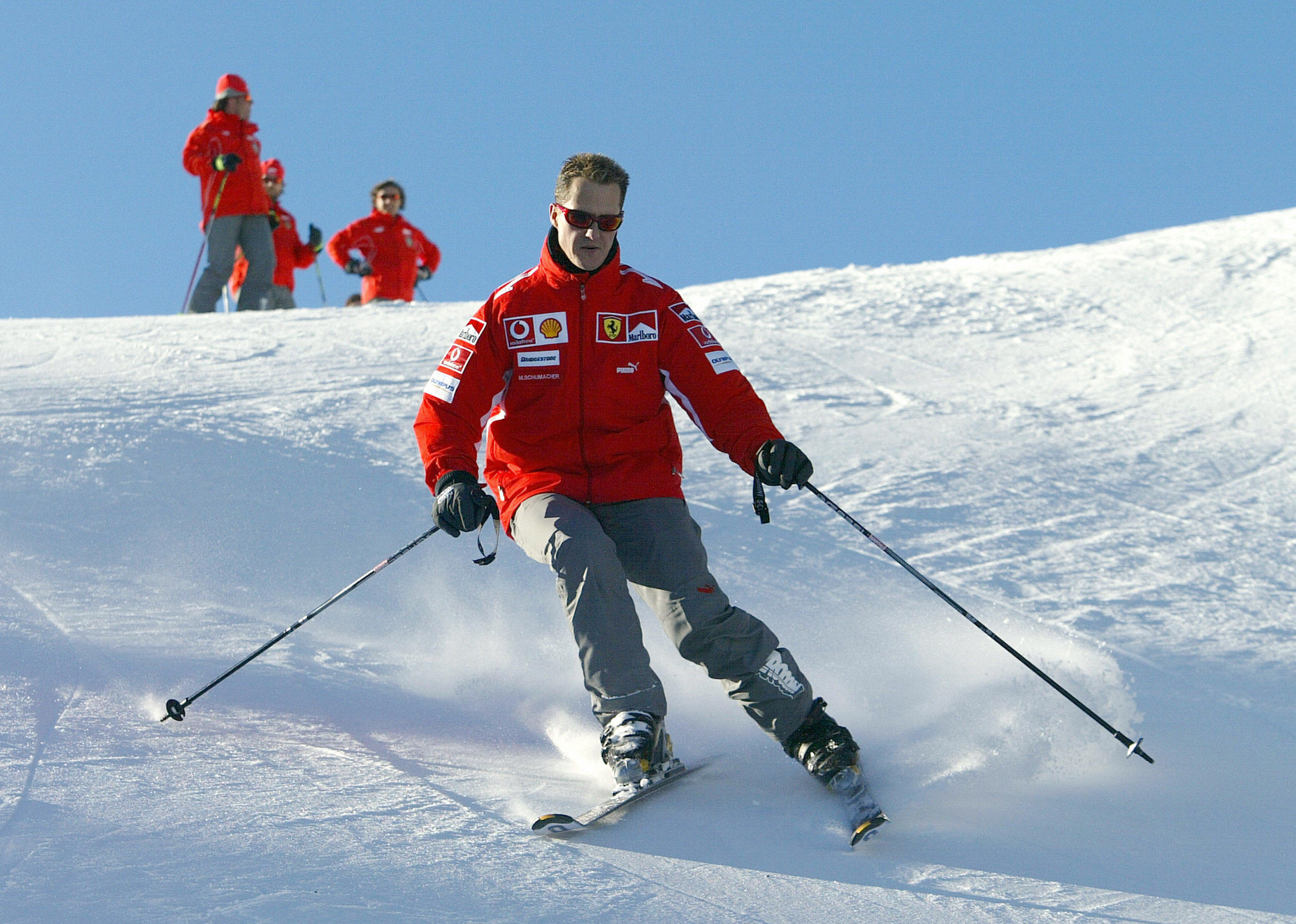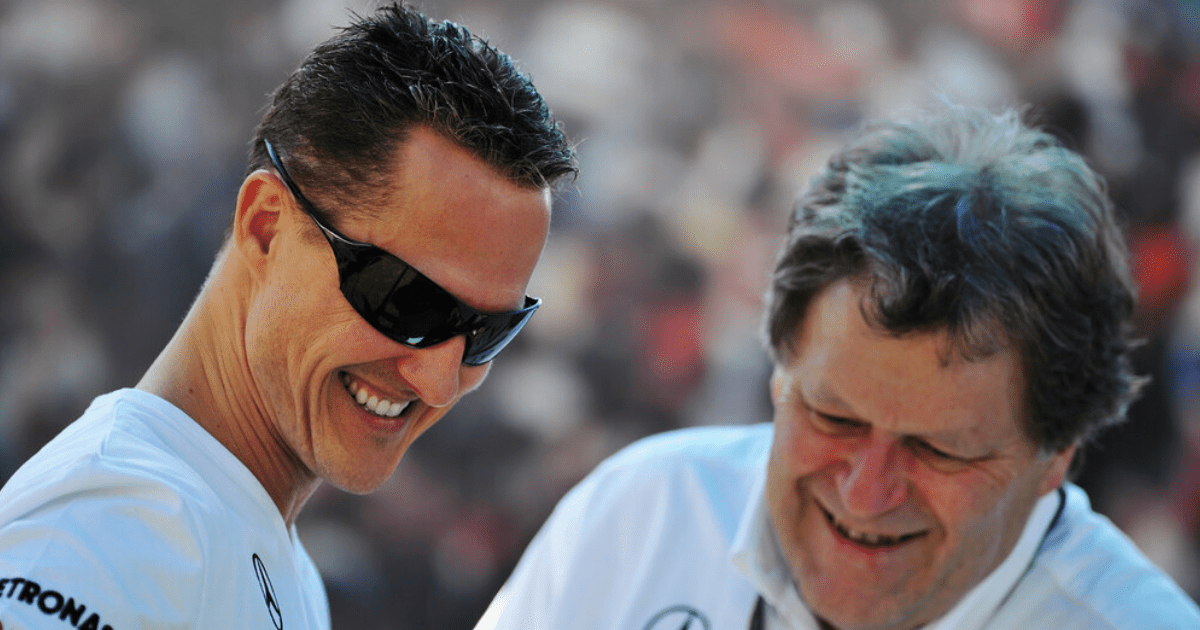Ski Trip Gone Wrong
Michael Schumacher's close friend and former Mercedes chief, Norbert Haug, opens up about the racing star's tragic ski accident, revealing that Schumacher "never took risks" on the slopes and the trip was supposed to be "harmless."
Shocking Revelation
Haug, a long-time companion of Schumacher, expressed his disbelief that the accident occurred during what was meant to be a safe and controlled ski trip, calling it a "real misfortune."
Life-Altering Accident
The seven-time F1 world champion suffered a severe head injury in the skiing incident in 2013, leaving him in a coma for 250 days and out of the public eye ever since.
Family Support
Haug commended Schumacher's wife, Corinna, for her strength in keeping the family together and maintaining privacy around Schumacher's condition.

Emotional Memories
Reflecting on his time with Schumacher, Haug shared fond memories of their friendship beyond the racetrack, highlighting Schumacher's competitive spirit on the track and his fun-loving nature off it.
Long Road to Recovery
Schumacher's brother, Ralf, admitted that the family may never fully recover from the accident, acknowledging the profound impact it has had on their lives.
Hope for the Future
Despite the challenges, there is hope as reports suggest Schumacher could attend his daughter's upcoming wedding, offering a glimmer of positivity amidst his ongoing recovery.
Frequently Asked Questions
What materials are commonly used in the construction of a Formula 1 car’s chassis?
The chassis of a Formula 1 car is primarily constructed from carbon fiber composites. The high strength-to weight ratio of this material allows for exceptional rigidity without adding much weight. Materials like aluminum and titanium, as well as advanced polymers, honeycomb structures and crash-absorbing materials, can also be used.
How does aerodynamics affect Formula 1 racing and how can it be improved?
The aerodynamics of Formula 1 race cars are crucial to their performance and handling. The cars are designed with wings and bodywork to create downforce, which forces them onto the track and improves grip. This allows for faster cornering. Drag reduction is also important for maximising straight-line speed. Aerodynamic efficiency is achieved by balancing the drag and downforce. This leads to complex designs, and continuous development during racing season.
How do F1 strategies depend on technology in different ways?
F1 racing strategies heavily depend on technology through the use of real-time data analysis, predictive modeling, and simulation. Teams analyze data on a broad range of topics, such as tire performance metrics or weather forecasts, to help them make strategic decisions, like pit stops and tire choices. Advanced software and machine learning models can simulate race scenarios to develop the most effective race strategy, and during the race, teams adapt these strategies based on live data and the evolving race conditions.
What is the difference between Formula 1 and Formula 2 cars in terms of braking system?
Formula 1 cars use highly advanced braking systems that combine carbon fiber discs and brake pads with sophisticated hydraulic systems to provide optimal stopping power. These components can resist high temperatures, and they provide responsive brakes. Brake-bywire systems in the rear provide fine-tuned electronic controls of brake force distribution. They help stabilize the car when decelerating and assist with the regeneration of energy.
What’s the purpose of the new Formula 1 halo?
The halo safety device was introduced into Formula 1 as a way to protect a driver’s face from impacts and debris. The halo is a titanium device that sits over the cockpit. It can withstand significant forces and has been credited for saving lives and preventing injuries since its introduction. The halo has become an integrated part of modern Formula 1 car design, illustrating the sport’s commitment to driver safety.
Statistics
- The energy recovery system (ERS) in modern Formula 1 cars can provide up to 161 horsepower of additional power for approximately 33 seconds per lap.
- Modern Formula 1 car chassis are required to withstand a frontal crash test with a peak deceleration of no more than 25 g.
- A Formula 1 steering wheel is one of the most complex components of the car, costing up to $50,000 to produce.
- Computational fluid dynamics simulations are capable of calculating around 300 million mesh points to simulate airflow around a Formula 1 car.
- Wind tunnel testing for Formula 1 cars is limited by regulations, with teams only allowed a maximum of 40 hours of running per eight-day aerodynamic testing period.
- Formula 1 cars can achieve lateral acceleration in excess of 5 g during cornering, which is about five times the force of gravity.
- A typical Formula 1 car’s brake discs can reach temperatures of over 1,000 degrees Celsius during heavy braking.
- Formula 1 engines can rev up to 15,000 RPM, a decrease from the 18,000 RPM limit set prior to the 2014 regulation changes.
External Links
sauber-group.com
autocar.co.uk
motorsport.com
renaultsport.com
formula1.com
autosport.com
bbc.com
techradar.com
How To
Understanding the F1 Tire Allocation Strategy
For a better understanding of F1 tire allocation strategies, you should familiarize yourself with different tire compounds and their performance in various conditions. Observe teams choosing tire sets for race weekend while taking track characteristics and weather predictions into account. Evaluate the mandatory tire usage regulations during races and assess how they impact strategy. Study pit stops in tire strategy to understand how teams can gain an advantage by balancing tire durability and speed.
Did you miss our previous article…
https://www.sportingexcitement.com/formula-1/fia-president-investigated-for-allegedly-interfering-with-f1-race-result/

